Sweet Water Organics
Milwaukee, Wisconsin
Scope of operation
Focus on perch cultivation & produce for local market
System mimics wetland: gravel & variety of plants filter water; plants are nourished through fish waste in water supply
Facilities
Empty industrial / manufacturing building
Products
Tilapia, perch (local native fish / popular for fish fries)
Vegetables: lettuce, basil, tomatoes, chile peppers, watercress
(had raised 3,000 perch / 45,000 tilapia at time of article; intend to focus on perch)
Vegetables are more profitable than fish – but having both in system increases efficiency
Inputs
Compost (from local restaurants that are supplied by Sweet Water)
Fish food
Electricity (light, pumps)
Waste
Solid waste from fish (must be removed from system periodically)
Additional benefits
Occupy unused urban space / infrastructure (abandoned manufacturing sites)
Reduce farm-to-table distance
Reduce water usage & soil disturbance
Bring native fish back to local diets after perch fishery collapse
Provide contaminant-free fish & produce in polluted areas
Reduce food production footprint
Potentials for increased efficiency
Include vermiculture to convert fish waste to plant nutrients
Explore alternative energy sources (wind, solar)
Reduce energy usage (daylighting plants, gravity-based water circulation systems)
Expand operations to include aquaculture system training & installation
Add rooftop farming operations to decrease urban impervious surfaces
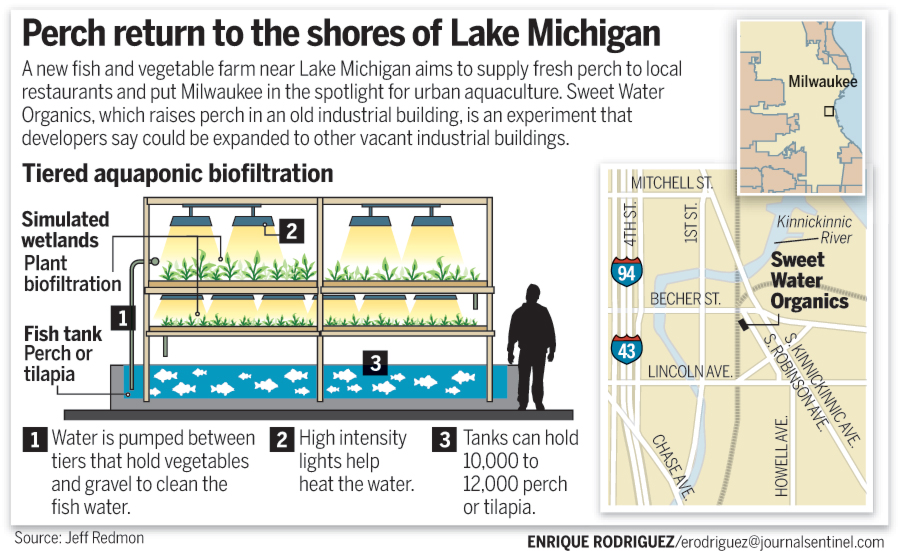
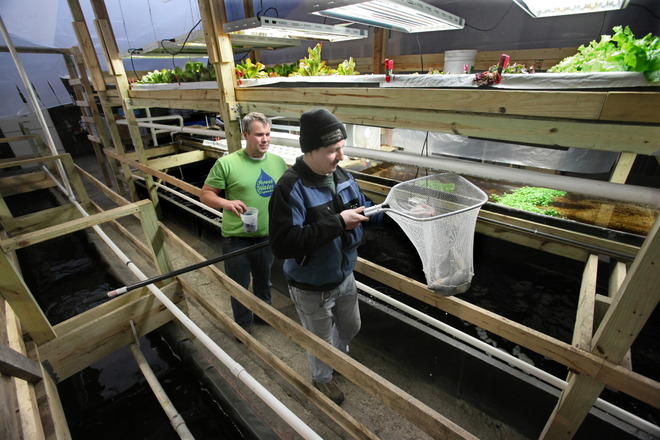
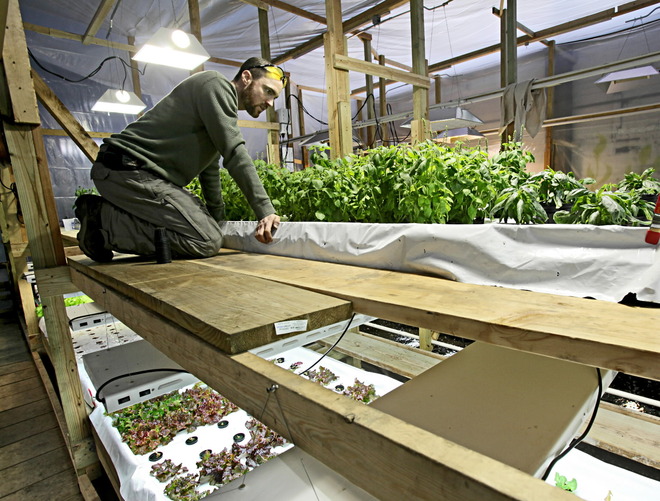

Natural Green Farm
Racine, Wisconsin
Scope of operation
Focus on plant production / fish is additional benefit
Growing system made up of fish tanks topped by hydroponic growing trays; feeder tubes drip fish water into hydroponic system/ plant wastewater drips into fish tanks
Facilities
10,000SF of 200,000SF factory building
Products
Lettuce (currently 7,000 heads)
Fish (24,000 tilapia / varying stages of development)
Goal: 4 million heads lettuce, 1 million pounds fish, rooftop tomato greenhouse
Inputs
Electricity: grow lights ($0.40 / head of lettuce)
Electricity: water pumps
Fish food
Savings
Water (<10% of traditional agriculture usage)
Space (vertical stacking)
Pesticides & fertilizer (none used)
Waste
Solid waste from fish (must be removed from system periodically)
Additional benefits
Occupy unused urban space / infrastructure (abandoned manufacturing sites)
Reduce farm-to-table distance
Reduce water usage & soil disturbance
Reduce overfishing
Provide contaminant-free fish & produce in polluted areas
Reduce food production footprint
Potentials for increased efficiency
Include vermiculture to convert fish waste to plant nutrients
Include composting to augment plant nutrients
Explore alternative energy sources (wind, solar)
Reduce energy usage (daylighting plants, gravity-based water circulation systems)

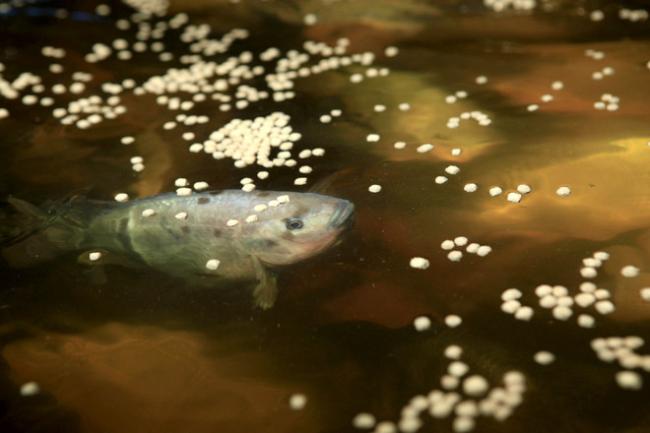
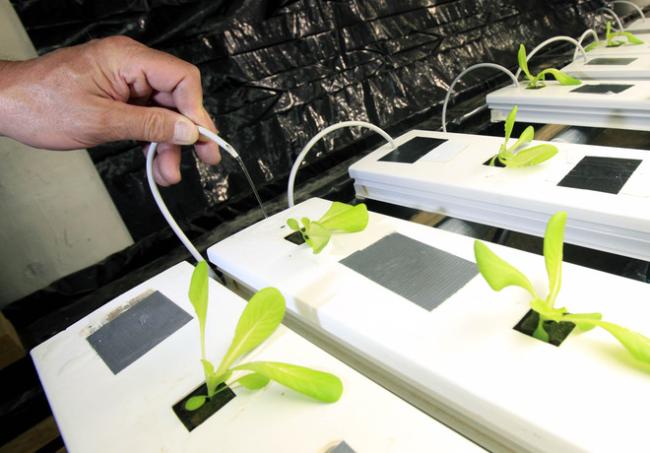
|








